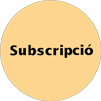
- Consell editorial: Xavier Triadó (director de l’Institut de Desenvolupament Professional–ICE), Mercedes Gracenea (cap de la Secció de Publicacions), Roser Boix (degana de la Facultat d’Educació), Mercè Puig Rodríguez-Escalona (vicerectora d’Estudiants i Política Lingüística), Amelia Díaz Álvarez (vicerectora de Docència i Ordenació Acadèmica)
- Direcció: Conrad Vilanou (Universitat de Barcelona)
- Cap de Redacció: Enric Prats (Universitat de Barcelona)
- Compaginació i correcció de textos: Cristian Frutos, Judit Sabido, Patrícia Adan i Serveis Lingüístics de la UB
Temps d’Educació està subjecta a la llicència Creative Commons Reconocimiento-NoComercial 4.0 Internacional (CC BY-NC 4.0). Podeu consultar la llicència completa a:

La revista no es fa responsable de les idees i opinions expressades en els articles.
Per a enviament d'articles, consulteu la pàgina de Normes de publicació.
Temps d’Educació realitza una avaluació dels articles pel sistema de doble cec per pars. La revista està indexada a RACÓ, CBUC (Universitats de Catalunya), Ulrich (Pro Quest), In-Recs (Universidad de Granada), CARHUS (Generalitat de Catalunya), ISOC (CSIC), Dialnet (Universidad de la Rioja), Latindex (UNAM, Mèxic), ERIH (European Science Foundation), Francis-Inist (CNRS), Sociological Abstracts (Pro Quest, Bathesda), OEI (Estados Iberoamericanos), DICE (CSIC), MIAR (UB), RESH (CCHS) i REDINET (MECD).
Dipòsit legal: B-23.289-2012
ISSN: 2014-7627
1. Articles may be written in Catalan, Spanish, English, French and Portuguese.
2. The length of the original drafts should be around 8,000 words or 40,000 characters including spaces. These limits include notes, bibliography, tables, diagrams and appendices.
3. All documents must be sent in Word format.
4. Articles must be structured in the following way:
- Title.
- Name/s of the author/s.
- Abstract.
- Keywords in the same language as the article.
- Body of the article.
- References.
- Translations of the abstract and keywords (see Guideline 16 for details).
5. Title
- In the same language as the article.
- In bold.
- Sentence-style capitalisation.
For example:
6. The name/s of the author/s
- Under the main title.
- Left-justified.
- A footnote should be included for each author, containing their current occupation, a 3- to 4-line biography and email address.
7. Abstract
- In the same language as the article.
- Maximum length: 10—12 lines.
8. Keywords
- In the same language as the article.
- Maximum length: 8 words.
- The initial letter of the first word capitalised.
- The remaining words or phrases in lower case, except for proper names and abbreviations.
- Separated by a comma.
- Punctuated by a full stop.
Combined example of guidelines 7 and 8:
9. Section and sub-section titles
-
Numbered in the correct order.
- In bold.
- Sentence-style capitalisation.
10. Body of the article
The body text should be written in font size 11. Moreover, titles must be written in the format specified in Guideline 9 in order to distinguish the sections and subsections adequately.
11. Centuries
Centuries should be in small capitals (converted from lower case).
12. Notes
- They must be placed at the foot of the corresponding page.
- They must be numbered consecutively.
- The number of the footnote must be placed in the appropriate place in the text.
- Footnotes should only be used to expand, give examples and comment on aspects considered important in relation to the body of the text.
- Indications to bibliographic references included in the body of the text should not be included in the notes.
13. Tables, diagrams and figures
- They must be inserted in the corresponding place in the text.
- The title should be brief, clear and explanatory, following the word “Table”, “Diagram” or “Figure”, as applicable, accompanied with the designated number (numbered with Arabic numerals sequentially in the text).
- The title should be inserted above the object, centred and in bold.
- The object should be centred.
- The source of the table, diagram or figure should be included below the object, left-justified, in roman type.
- Diagrams and tables should be submitted in a format that enables them to be opened for possible corrections.
- Authors are asked to limit the number of tables, diagrams and figures.
For example:
14. In-text citations and bibliographic references
- Literal citations shorter than 40 words should be included in the body of the text, always between double quotation marks (“ “).
- At the end of the citation, the bibliographic reference should be given in brackets and in the order author, year, page/s, as follows: (Lorenzo, 1999, p. 125) or (Lorenzo, 1999, p. 125–126).
- Such citations should never be placed at the foot of the page.
- Literal citations longer than 40 words must be presented in a free-standing block of text without quotation marks, in a smaller font size than the rest of the page and more indented from the left margin than the rest of the page.
- At the end of the citation, the bibliographic reference should be given in brackets and in the order author, year, page/s, as follows: (Lorenzo, 1999, p. 125) or (Lorenzo, 1999, p. 125–126).
- The last full stop punctuating the citation must precede the opening bracket.
- Such citations should never be placed at the foot of the page.
For example:
15. Bibliographic references
- Included in a separate section at the end of the article and before the translations of the abstract and keywords.
- With a hanging indent.
- Citation criteria and examples depend on the type of document:
16. Translations of abstracts and keywords
- If the article is in Catalan or Spanish, a translation of its abstract and keywords should be provided in Spanish or Catalan, respectively, and translations should also be provided in French and English.
- If the article is in Portuguese, a translation of its abstract and keywords should be provided in Catalan, French and English.
- The same criteria apply to the translation of the keywords as to the original keywords section.
17. Authors should submit their articles to temps@ub.edu

